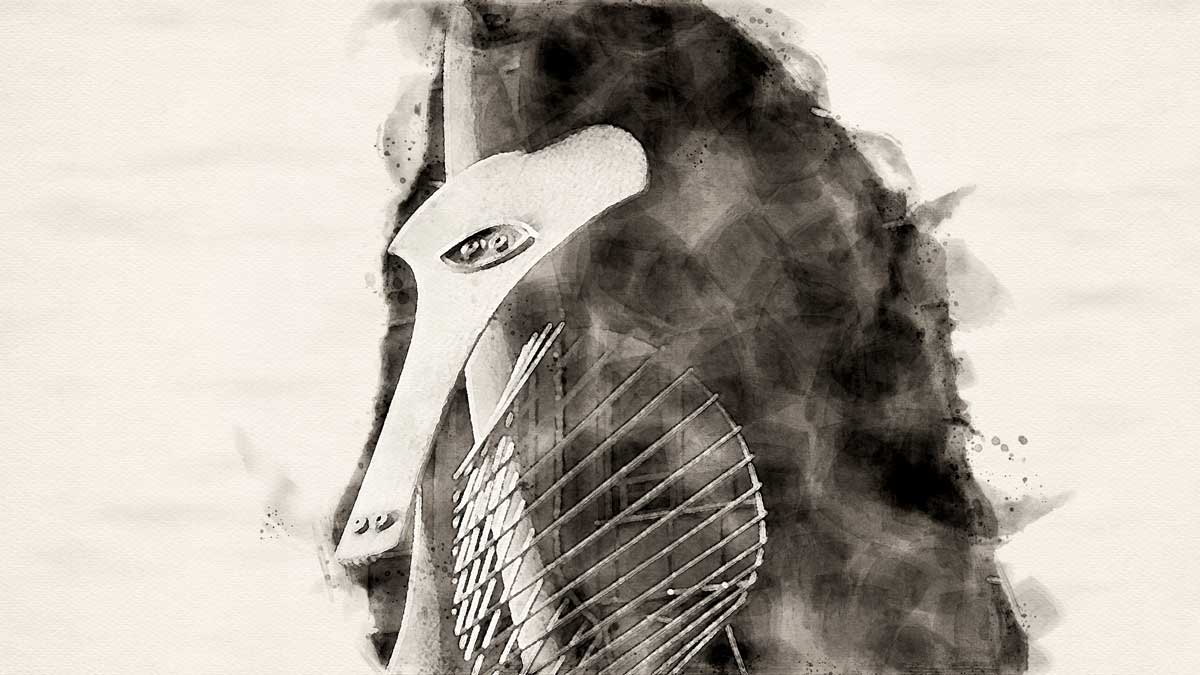This episode of the See America Podcast was written and hosted by Jason Epperson with narration by Abigail Trabue.
Chicago, Illinois. The Windy City. The City of Big Shoulders. The City in a Garden. The City That Works. And my home town for 16 years. I can tell you a lot about Chicago. But one of my favorite things about Chicago is one of the lesser-known reasons to visit – world-class urban sculpture.
Listen below, or on any podcast app:

The See America Podcast is sponsored by Roadtrippers. America’s #1 trip planning app. Enjoy 20% off your first year of Roadtrippers PLUS with the code RVMILES917X.
The Great Chicago Fire of 1871 was one of the worst disasters in American history. It killed approximately 300 people and left more than 100,000 residents homeless. But there was a silver lining. Chicago, which had been built as most cities are — haphazardly, over time, and with little organization — could rebuild according to a plan that would allow the city to flourish through the industrial revolution. The man behind that plan would be architect Daniel Burnham, whose city of the future would have a great front yard – Grant Park. And the centerpiece of that park would eventually be, to Burnham’s dismay, a grand rococo wedding-cake style fountain.
History of Buckingham Fountain:
Officially opened to the public on May 26, 1927, the Clarence Buckingham Memorial Fountain sits on a site that, for decades, had been the subject of heated controversy. Daniel Burnham planned to build the Field Museum of Natural History in this location in the center of Grant Park. But businessman Aaron Montgomery Ward fought four Illinois State Supreme Court battles to prevent the building’s construction in order to keep the park’s lakefront view “free and clear” of any obstructions. After Ward won his final case in late 1910, the park’s Commission did not have alternate plans for the site, and it remained unimproved for years.
Finally, in the early 1920s, architect Edward Bennett, longtime associate of Burnham and co-author of his seminal blueprint for Chicago, prepared new plans to complete Grant Park. Bennett envisioned a monumental fountain to serve as the park’s formal focal point without obstructing views of Lake Michigan. Philanthropist and art patron Kate Sturges Buckingham agreed to donate one million dollars for the fountain in the memory of her brother, philanthropist, and businessman Clarence Buckingham.
Inspired by the Latona Basin at the palace of Versailles, Buckingham Fountain, however, is twice the size and re-circulates approximately three times more water than its French counterpart – 15,000 gallons of water per minute, much of which sprays to a height of 150 feet from the ground. Chicago’s fountain is also different in that it expresses Lake Michigan throughout its design. The massive lower basin features four sets of Art Deco style sea horses representing the four states that border Lake Michigan.
The fountain’s original design included colored lighting to emulate soft moonlight. During the dedication in August 1927, John Philip Sousa conducted while his band played “Pomp and Circumstance” before an audience of 50,000 people.
For years, the fountain was entirely manually operated by two stationary engineers who each worked a daily twelve-hour shift. Historically, the major water displays occurred only twice a day, three times a week. These displays were so popular that they began to be offered every day in the late 1950s. The engineers’ job became even more involved at night. They used a keyboard with twenty-one electric switches that could fade, brighten, and blend colors to create numerous light effects. Although the light show was first automated in 1968, the water continued to be manually operated until 1980, when the operations were fully computerized. From 1983 to 1994, the fountain’s computer monitoring system was located in Atlanta; however, today, the computer is located on-site, and monitoring takes place in a Chicago suburb.
In 1994, the Buckingham Fountain underwent a major conservation project that addressed some of its masonry problems. Between 2009 and 2012, additional repairs were made, including landscape improvements surrounding the monument, plumbing upgrades, and computer upgrades.
Having survived Capone and the gangs of the 20s, and the depression of the 30s, by the 1960s, Chicago had cemented its place in America as a working-class metropolis, a melting pot of immigrants from around the world. One thing had never changed – Chicago politics. The Chicago political machine had grown to its height of power under the hand of Richard J. Daly.
Daly, for all his faults, loved Chicago and wanted his city to be seen as a world-class cosmopolitan oasis.
Situated on Randolph and Washington Streets between Dearborn and Clark Streets, Daley had built a civic center for the city in a modernist skyscraper that would houses offices and courtrooms for the Cook County Circuit Courts, adjacent to the Chicago City Hall and County Building. It was the tallest building in Chicago at the time, and the plaza in front of it would be a place for people to congregate, an in-ground fountain and an eternal flame memorial to the dead from World War I, World War II, the Korean War, and the Vietnam War, and a great sculpture – but from who or where would that sculpture come?
The Picasso Sculpture:
Various sculptor names were tossed about by the plaza’s commission until they decided to put names into a hat, and, remarkably, everyone had chosen Pablo Picasso. An architect who worked on the Daley Center project, Richard Bennett, wrote Picasso a poem asking him to make the sculpture. Picasso accepted.
Picasso was 82 years old at the time and living on the French Riviera, where he crafted a 41-inch model of the design. Once the Mayor approved the work, architect William Hartmann was sent to Picasso with a check for $100,000 as payment. The artist, who had never specified a fee, examined it, and then put it back in Hartmann’s pocket, saying, “This is my gift to the people of Chicago.” Hartmann also presented Picasso with a series of Chicago gifts, including a Cubs hat, a Sioux headdress, and White Sox memorabilia. Picasso was grateful, but he could not understand why Chicago named one of its teams after their stockings.
The sculpture was built in a steel fabrication plant in Gary, Indiana. There were no precise measurements to follow, so workers had to perform intricate measurements to scale it up.
Was it a dog? A bird? A baboon? Picasso never explained what the sculpture was intended to represent. In fact, he didn’t even title it. But it may have been inspired by a French woman, Sylvette David, now known as Lydia Corbett, who posed for Picasso in 1954. Corbett would accompany her artist boyfriend as he delivered chairs made of metal, wood, and rope. One of those deliveries was to Picasso, who was struck by her high ponytail and long neck. Picasso made 40 works inspired by her.
Upon reveal, the sculpture was derided by many Chicagoans. Alderman John Hoellen immediately proposed replacing it with a statue of baseball great Ernie Banks. Newspaper columnist Mike Royko wrote: “Interesting design, I’m sure. But the fact is, it has a long stupid face and looks like some giant insect that is about to eat a smaller, weaker insect.” He said, “its eyes are like the eyes of every slum owner who made a buck off the small and weak. And of every building inspector who took a wad from a slum owner to make it all possible…. You’d think he’d been riding the L all his life.”
Whatever thoughts about the untitled work were at the time, today, the Chicago Picasso has become a symbol of the city, loved and respected by its residents.
The building, originally known as the Chicago Civic Center, was renamed for Mayor Daley on December 27, 1976, seven days after his death.
Toward the end of the 1900s, Chicago had a new mayor with a familiar name, also looking to advance his city to rival other world-class destinations – Richard M. Daley.
As the new Millenium approached, the younger Daley wanted to build upon Chicago’s history of large civic projects to celebrate. Chicago would build a new park that would extend its front lawn over a mass of railyards that were a blight on the lakefront’s beauty. It would be called Millenium Park, and it would get its own centerpiece sculpture.
Cloud Gate or Chicago’s The Bean:
In 1999, Millennium Park officials and a group of art collectors, curators, and architects reviewed the artistic works of 30 different artists, eventually choosing a design by internationally acclaimed artist Anish Kapoor for Millenium Park’s centerpiece. Measuring 33 by 66 by 42 feet, and weighing 100 tons, the proposal featured a seamless, stainless steel surface inspired by liquid mercury. Officially titled “Cloud Gate,” the sculpture’s mirror-like surface would reflect the Chicago skyline, but its elliptical shape would distort and twist the reflected image. As visitors walk around the structure, its surface acts like a fun-house mirror as their reflections become one with the towering skyscrapers.
The concave underside allows visitors to walk underneath its arch to the other side so that they view the entire structure interactively.
Although Kapoor does not draw with computers, computer modeling was essential to the process of analyzing the complex form, which presented numerous issues, such as reflected heat, graffiti, bird droppings, and fingerprints. But the most pressing issue was the need to create a single seamless mirrored exterior.
A British engineering firm provided the sculpture’s structural design, and a company called Performance Structures, Inc. was chosen to fabricate it because of their ability to produce nearly invisible welds. Initially, PSI planned to build and assemble the sculpture in Oakland, California, and ship it to Chicago through the Panama Canal and St. Lawrence Seaway. However, this plan was discarded after park officials deemed it too risky, so the decision was made to transport the individual panels by truck and to assemble the structure on-site.
The roof of the Park Grill, upon which Cloud Gate sits, had to be built strong enough to bear the weight. The large retaining wall separating Chicago’s Metra train tracks from the North Grant Park garage supports much of the weight of the sculpture and forms the backside of the restaurant. This wall, along with the rest of the garage’s foundation, required additional bracing before the piece was erected.
Inside Cloud Gate’s polished exterior shell are several steel structures that keep the sculpture standing. Stainless steel rings were put into place in February 2004. As construction continued, crisscrossing pipe trusses were assembled between the two rings. The trusses and supporting structures were only present for the construction phases. The finished sculpture has no inner bracing.
The outer shell is made from 168 stainless steel panels, each 3⁄8 inch thick and weighing 1,000 to 2,000 pounds. Computers and robots bent and shaped of the plates, and then they were polished to 98 percent of their final state and covered with protective white film before being sent to Chicago via trucks.
Once in Chicago, the plates were welded together on-site, creating 2,442 linear feet of welded seams. The plates were fabricated so precisely that no on-site cutting or filing was necessary when lifting and fitting them into position.
When construction of the shell began in June 2004, a large tent was erected around the piece to shield it from public view, but it was revealed unfinished for the grand opening of Millennium Park on July 15, 2004. Chicagoans and the press began to call it “The Bean,” referring to its Kidney Bean shape. Kapoor was outraged, calling it “completely stupid.” but he’d soon grow to accept the nickname.
The original plan was to re-erect the tent around the sculpture for polishing, but public appreciation for the piece convinced park officials to leave it uncovered for several months. The tent was again erected in January 2005 as a 24-person crew from Ironworkers Local 63 polished the seams between each plate.
Cloud Gate was finally completed on August 28, 2005. The cost for the piece was first estimated at $6 million, but had escalated to $23 million by the time it was completed. No public funds were involved; all funding came from donations from individuals and corporations.
Kapoor’s contract states that the constructed piece should be expected to survive for 1,000 years. The lower 6 feet is wiped down twice a day by hand with a Windex-like solution, while the entire sculpture is cleaned twice a year with 40 gallons of liquid Tide.
Know Before You Go:
Buckingham Fountain, The Picasso, and Cloud Gate are only a small slice of Chicago Sculpture, and they’re all within a couple blocks of each other. You can also visit Calder’s Flamingo, or Agora, a modern sculpture of 106 headless 9-ft. cast iron figures. There’s the Crown Fountain, which is two 50-ft.towers over a large reflecting pool. The towers have LED screens that show rotating faces of Chicagoans that spit water out into the pool. And then, of course, there’s the Art Institute of Chicago, one of the top Art Museums in the world, and home to countless works. So whether you come to visit the statue of Lincoln in Grant Park or the statue of Grant in Lincoln Park, make Chicago your next public sculpture adventure.
Connect With Us
Join the See America Facebook Group here. You can also follow See America on Facebook, Instagram, and Twitter.
Find more resources for the U.S. based traveler and National Park enthusiast at RVMiles.com.
If you’re a National Park lover, check out the America’s National Parks Podcast, or come listen to Abigail and me talk about our life on the road with our three boys on the RV Miles Podcast. Paragraph
Don’t forget to take advantage of the Roadtrippers PLUS discount:
The See America Podcast is sponsored by Roadtrippers. America’s #1 trip planning app. Enjoy 20% off your first year of Roadtrippers PLUS with the code RVMILES917X.






